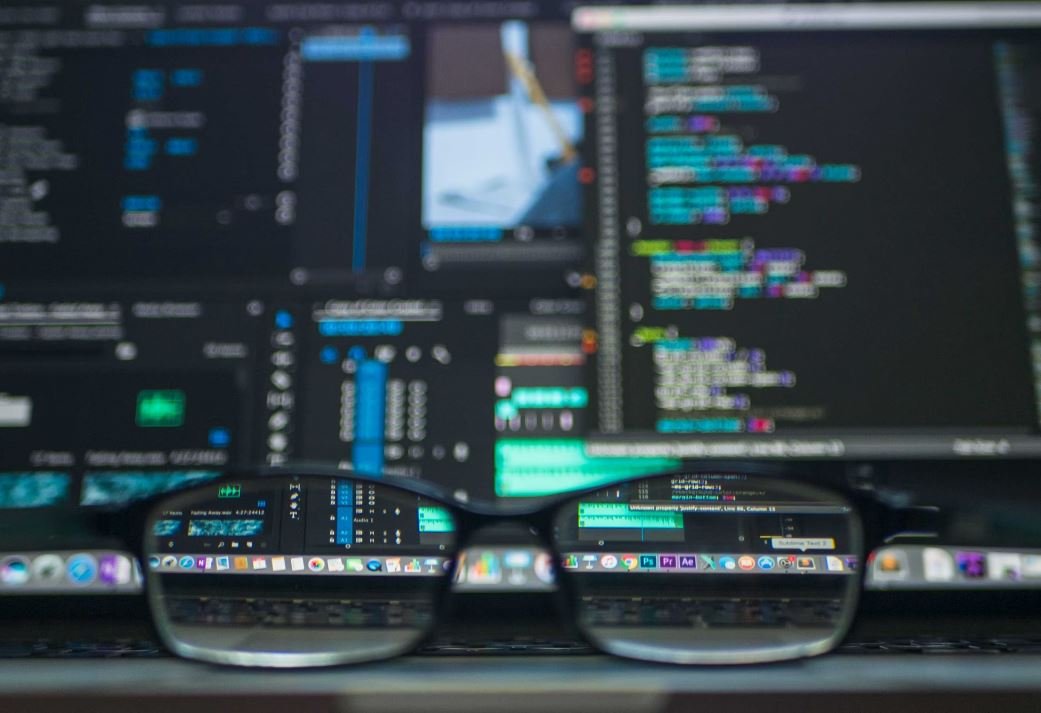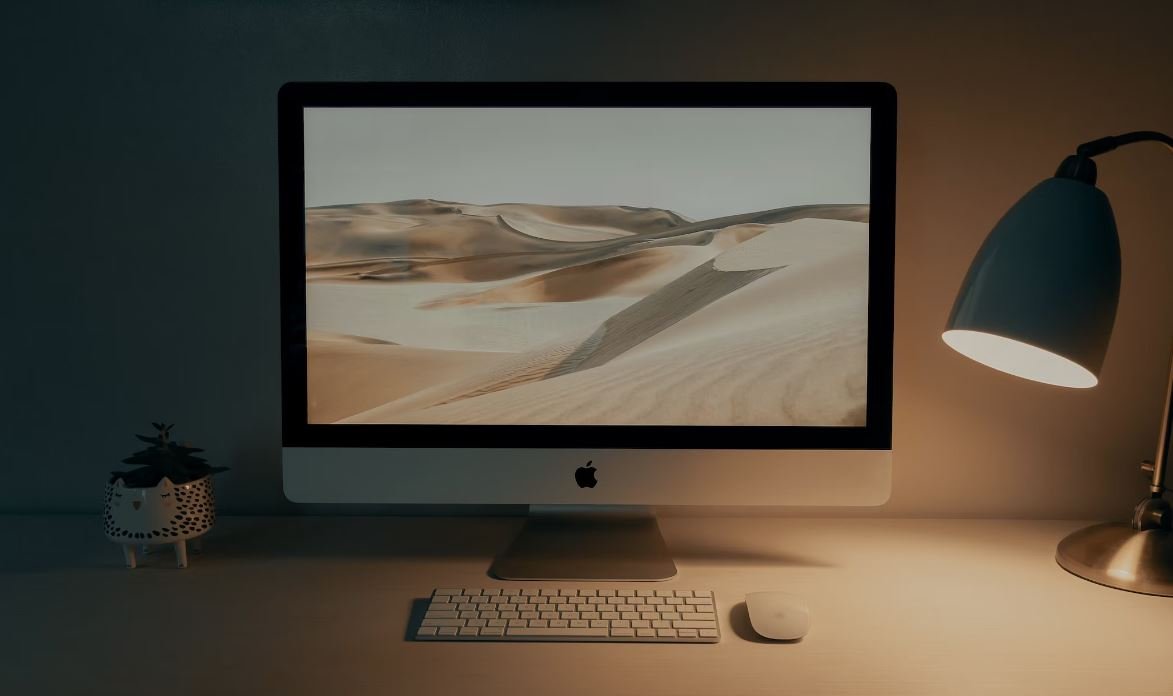AI for Video Editing
Video editing is an essential part of the filmmaking process, but it can be time-consuming and tedious. Luckily, advances in artificial intelligence (AI) have revolutionized the way we edit videos. AI algorithms can now analyze and process footage, making it easier and faster to create professional-looking videos. In this article, we will explore the benefits of using AI for video editing and how it can enhance your workflow.
Key Takeaways
- AI in video editing has streamlined the editing process, saving time and effort.
- AI algorithms can automatically detect and remove unwanted elements from footage.
- AI can analyze and categorize video content, making it easier to search and retrieve specific clips.
- The use of AI in video editing leads to more consistent and accurate results.
One of the greatest advantages of AI in video editing is its ability to automate repetitive tasks. With AI algorithms, tasks like sorting and organizing footage, applying filters and effects, and even color grading can be done in a fraction of the time it would take manually. This allows video editors to focus on the creative aspects of their work, resulting in more efficient and productive workflows. *AI-powered automation frees up time for editors to explore new creative ideas and experiment with different styles.*
Another area where AI excels in video editing is object and scene detection. AI algorithms can analyze the content of videos and automatically identify and remove unwanted elements such as logos, watermarks, or even people. This saves editors the hassle of manually scrubbing through footage to find and remove these elements, and ensures a cleaner and more professional-looking final product. *AI algorithms accurately detect and remove unwanted objects, enhancing the overall visual appeal of the video.*
AI can also be used to categorize and index video content. By analyzing the visual and audio components of a video, AI algorithms can classify videos based on their content, making it easier to search and retrieve specific clips. This is particularly beneficial for large video libraries where finding the right footage can be time-consuming. With AI-powered indexing, editors can quickly locate the exact shots they need, improving overall productivity. *AI categorization enables fast and efficient retrieval of specific video clips, saving time and effort.*
| Task | Manual Editing | AI-assisted Editing |
|---|---|---|
| Footage sorting and organization | Time-consuming | Automated, saves time |
| Removing unwanted elements | Manual scrubbing | Automatic detection and removal |
| Video content categorization | Time-consuming | Automated, efficient searching |
In addition to speeding up the editing process, AI-driven automation also leads to more consistent and accurate results. AI algorithms can be trained to recognize specific aspects of video editing, such as scene transitions or audio levels, and automatically apply the desired changes throughout the entire video. This ensures a cohesive and polished final product, as well as reducing the risk of human error. *AI automation improves the consistency and accuracy of video edits, resulting in high-quality videos.*
While AI has undoubtedly transformed the video editing landscape, it is important to note that it is not a replacement for human creativity and intuition. While AI algorithms can analyze, process, and automate certain aspects of video editing, the final artistic decisions still lie in the hands of the editor. The combination of AI-powered tools and human creativity is where the real magic happens. *AI for video editing is a powerful tool that enhances the capabilities and efficiency of human editors, resulting in outstanding videos.*
| Pros | Cons |
|---|---|
| Saves time and effort | Requires initial setup and training |
| Automates repetitive tasks | May not always have desired creative judgment |
| Enhances the visual appeal of videos | Not a replacement for human creativity |
In conclusion, AI has significantly improved the efficiency and quality of video editing. By automating repetitive tasks, removing unwanted elements, categorizing video content, and ensuring consistent results, AI algorithms have become valuable tools for video editors. While AI can speed up the editing process and enhance the overall visual appeal of videos, it is important to remember that creativity and artistic decision-making still rest with human editors. The combination of AI and human ingenuity is the key to unlocking the full potential of video editing.

Common Misconceptions
1. AI for video editing is fully automated
One common misconception about AI for video editing is that it is fully automated, meaning it can replace human editors entirely. However, this is not entirely true. While AI technology has advanced and can assist with certain aspects of the editing process, it still requires human intervention and creativity to produce high-quality videos.
- AI can analyze footage and suggest edits based on specific criteria.
- AI can automate repetitive tasks, such as organizing and tagging media assets.
- AI can use machine learning algorithms to anticipate editing choices based on patterns.
2. AI for video editing makes human editors obsolete
Another misconception people have about AI in video editing is that it will make human editors obsolete. However, this is not the case. AI technology enhances the capabilities of human editors, allowing them to work more efficiently and focus on more creative aspects of the editing process. Human judgment and artistic vision are still crucial for producing impactful videos.
- AI can help human editors experiment with different effects and styles more quickly.
- AI can analyze vast amounts of data to provide insights for decision-making.
- AI can assist in automating mundane tasks to free up time for creativity.
3. AI for video editing cannot match human creativity
Some people believe that AI for video editing cannot match human creativity and intuition. While AI has limitations, it can generate creative suggestions and even learn from human editors to refine its abilities. AI technology is not meant to replace human creativity but to amplify it.
- AI can analyze video content to identify patterns and suggest creative edits.
- AI can generate automated compositions based on predefined styles or preferences.
- AI can learn from human editors’ choices and apply similar techniques to new projects.
4. AI for video editing is too complex to implement
Another misconception is that implementing AI for video editing is a complex and time-consuming process. While integrating AI technology may require some initial setup and training, there are user-friendly software and plugins available that make it more accessible and straightforward.
- AI-powered video editing tools often come with user-friendly interfaces and tutorials.
- AI plugins can be seamlessly integrated into existing video editing software.
- AI technology providers offer support and resources to assist with implementation.
5. AI for video editing is only for professionals
Many people assume that AI for video editing is only for professionals in the field. However, AI-powered video editing tools are becoming more accessible to beginners as well. These tools can assist novices in achieving professional-looking results without extensive knowledge or experience.
- AI-powered tools often feature intuitive interfaces designed for beginners.
- AI can automate complex editing processes, simplifying them for entry-level users.
- AI can provide real-time feedback and suggestions to guide users in their editing journey.

AI for Video Editing
Artificial Intelligence (AI) has revolutionized various industries, and video editing is no exception. With AI-powered software, editors can now streamline and enhance the post-production process, allowing for greater creativity and efficiency. In this article, we explore different elements of AI for video editing through engaging tables that showcase its capabilities and impact.
Video Editing Software with AI Integration
AI-driven video editing software has gained significant popularity due to its ability to automate various editing tasks. Here, we present a list of software that incorporates AI to enhance the editing process:
| Software | Description | Key Features |
|---|---|---|
| Adobe Premiere Pro | Leading video editing software with AI-powered tools and integration with other Adobe products. | Automated editing, motion tracking, audio enhancement |
| DaVinci Resolve | Professional editing software offering AI-based color grading and visual effects. | Smart noise reduction, facial recognition, object removal |
| Final Cut Pro X | Apple’s video editing software with AI-driven features for video optimization. | Automated metadata tagging, audio intelligence, performance analysis |
The Impact of AI in Video Editing
AI technologies have had a profound impact on the video editing industry. The following table presents interesting statistics that demonstrate the effectiveness of AI in video editing:
| Impact | Statistic |
|---|---|
| Time-Saving | AI-powered editing tools can save up to 50% of the editing time, increasing overall efficiency. |
| Consistency | AI algorithms ensure consistent editing styles and quality across different videos. |
| Accuracy | AI can detect and correct errors, reducing the need for manual intervention and rework. |
| Creative Enhancements | AI algorithms enable automated object tracking, advanced effects, and dynamic transitions. |
| Accessibility | AI-based tools make video editing more accessible to beginners without extensive technical skills. |
AI-Generated Video Thumbnails
Video thumbnails play a crucial role in attracting viewers. AI can generate compelling and relevant thumbnails using image analysis and recognition. The table below showcases the advantages of using AI for generating video thumbnails:
| Advantage | Description |
|---|---|
| Increased Click-Through Rates | AI-generated thumbnails improve the chances of users clicking on the video, increasing engagement. |
| Visual Appeal | AI can select visually striking frames from the video, making thumbnails more appealing. |
| Relevance | AI algorithms identify the most representative frames, ensuring that the thumbnails accurately depict the video content. |
| Efficiency | Generating thumbnails automatically using AI saves time and effort compared to manual selection. |
AI-Powered Voiceover Generation
AI can transform the voiceover process by automatically generating voiceovers for videos. This table highlights the benefits of utilizing AI for voiceover generation:
| Benefit | Description |
|---|---|
| Time Efficiency | AI can generate voiceovers quickly, helping editors meet tight deadlines and turnaround times. |
| Multi-Language Support | AI voiceover solutions can generate voiceovers in multiple languages, expanding global reach. |
| Flexibility | Editors can easily experiment with different voiceover styles and tones using AI-powered tools. |
| Cost-Effectiveness | AI-based voiceover generation eliminates the need to hire professional voice actors, reducing production costs. |
Video Summarization with AI
AI-powered video summarization algorithms can condense lengthy videos into shorter, more digestible versions. The following table illustrates the advantages of AI for video summarization:
| Advantage | Description |
|---|---|
| Time-Saving | AI can automatically extract key moments from a video, saving time compared to manually selecting highlights. |
| Engagement | Summarized videos capture viewers’ attention by condensing the content into its most important aspects. |
| Information Retention | AI-generated summaries enhance information retention by highlighting the core messages of the video. |
| Content Discovery | Video summaries enable users to quickly assess whether a video aligns with their interests. |
AI-Based Video Transcription
Transcribing videos can be a time-consuming task. AI technology offers efficient solutions that automate this process, as shown in the table below:
| Benefit | Description |
|---|---|
| Time Savings | AI can automatically transcribe videos, significantly reducing the time spent on manual transcription. |
| Accuracy | AI algorithms can accurately transcribe speech, minimizing errors and improving overall transcription quality. |
| Searchability | Transcripts generated by AI enable quick keyword searches within the video, facilitating content retrieval. |
| Accessibility | Transcripts improve accessibility by providing a text-based alternative for individuals with hearing impairments. |
AI-Enhanced Video Stabilization
Shaky footage can reduce the overall quality of a video. AI-powered stabilization algorithms can significantly enhance video stability, as demonstrated in the table below:
| Advantage | Description |
|---|---|
| Image Quality | AI algorithms stabilize shaky footage, resulting in smoother, more visually appealing videos. |
| Professional Look | Stabilization can give videos a professional look, eliminating distracting camera movements. |
| Increased Engagement | Stable and smooth videos enhance viewer engagement by providing a seamless watching experience. |
| Efficiency | Automated stabilization with AI eliminates the need for manual adjustments frame by frame. |
AI-Driven Video Color Correction
Correcting color in videos is crucial for achieving the desired visual aesthetics. AI-powered color correction tools offer numerous advantages, as seen in the table below:
| Advantage | Description |
|---|---|
| Enhanced Color Accuracy | AI algorithms can analyze and adjust colors precisely, resulting in visually appealing videos. |
| Consistency Across Videos | Automated color correction helps maintain a consistent look and feel across multiple video clips. |
| Efficiency | AI-driven color correction tools expedite the process, reducing manual adjustments frame by frame. |
| Advanced Color Grading | AI algorithms provide granular control over colors, allowing for creative color grading techniques. |
AI-Powered Video Object Removal
Removing unwanted objects from videos can be a laborious task. Utilizing AI for automated object removal offers significant advantages, as shown below:
| Advantage | Description |
|---|---|
| Time Efficiency | AI algorithms can automatically remove objects, saving considerable time compared to manual editing. |
| Seamless Results | AI removes objects seamlessly, leaving no visible traces of the removed element. |
| Improved Visual Composition | Removing distractions enhances the overall visual composition, drawing viewers’ attention to the desired subjects. |
| Complex Object Removal | AI can handle the removal of complex objects, such as moving subjects or background elements. |
AI has transformed video editing by automating labor-intensive tasks, enhancing creative possibilities, and increasing overall efficiency. Through the integration of advanced algorithms and machine learning, video editors now have access to powerful tools that streamline the editing process. With AI for video editing, the future of content creation continues to evolve, empowering professionals and enthusiasts alike.
Frequently Asked Questions
What is AI for video editing?
AI for video editing refers to the use of artificial intelligence technologies, such as machine learning and computer vision, in automating and enhancing various aspects of the video editing process. This includes tasks like video analysis, scene identification, automatic editing, object tracking, and more.
What are the benefits of using AI for video editing?
The benefits of using AI for video editing are numerous. It can save a significant amount of time and effort by automating repetitive tasks, allowing editors to focus on more creative aspects. It can also improve efficiency, accuracy, and consistency in video editing workflows. Additionally, AI can provide new tools and capabilities that were not previously available, enhancing the overall quality and visual appeal of videos.
How does AI help with video analysis?
AI algorithms can analyze video content in various ways. They can detect and track objects, recognize faces, identify scenes or events, analyze sentiment, transcribe dialogue, and more. This analysis enables editors to efficiently navigate video footage, locate specific content, and make informed editing decisions based on the insights provided by the AI system.
Can AI automatically edit videos?
Yes, AI technologies can automate some aspects of video editing. For example, AI algorithms can automatically identify and remove unwanted footage, stabilize shaky videos, enhance visual quality, suggest transitions or effects, and even generate basic edits based on predefined styles or templates. However, human intervention is often needed to ensure the desired artistic vision and narrative coherence in the final edit.
Does using AI for video editing replace human editors?
No, AI for video editing is not meant to replace human editors. Instead, it serves as a powerful tool to assist and enhance their capabilities. AI can automate mundane and repetitive tasks, provide creative suggestions, speed up the editing process, and improve the overall quality of the final product. Human editors, with their intuition and artistic expertise, are still crucial for making subjective decisions and understanding the emotional nuances of a video.
What are some popular AI tools for video editing?
There are several popular AI tools available for video editing. Some examples include Adobe Premiere Pro, which incorporates AI-powered features like automatic color correction and intelligent audio clean-up; Final Cut Pro, which uses AI algorithms for video stabilization and object recognition; and DaVinci Resolve, which offers AI-enabled features for image enhancement and facial tracking, among others.
Are there any limitations to AI in video editing?
While AI has made significant advancements in video editing, there are still some limitations to consider. AI algorithms heavily rely on the quality and quantity of training data, so they may struggle with uncommon or poorly lit footage. AI systems also lack the human understanding of context and emotions, making subjective decisions challenging. Additionally, AI tools may not be accessible to everyone due to cost or technical requirements.
What skills are required to use AI for video editing?
Using AI for video editing typically requires a basic understanding of video editing principles and techniques. Additionally, familiarity with the specific AI tools or software being used is necessary. Some knowledge of AI concepts and algorithms can also be beneficial for advanced usage. However, as AI for video editing becomes more user-friendly, the learning curve is expected to decrease, allowing more people to harness its power without extensive technical knowledge.
Can AI improve video editing workflows?
Absolutely, AI can greatly improve video editing workflows. By automating time-consuming tasks like video analysis, scene detection, and audio synchronization, editors can save valuable time and focus on the creative aspects of their work. AI tools can also provide smart suggestions for effects, transitions, or pacing, enhancing the efficiency and quality of the editing process. Ultimately, the integration of AI into video editing workflows can lead to increased productivity and better end results.
How can I get started with AI for video editing?
To get started with AI for video editing, you can begin by exploring the AI features offered by popular video editing software. Experiment with automated editing tools, AI-driven effects, and analytics capabilities. Additionally, there are online tutorials, courses, and communities dedicated to AI in video editing that can help you enhance your skills and stay updated with the latest advancements. Don’t hesitate to experiment and practice to unlock the full potential of AI in your video editing process.




